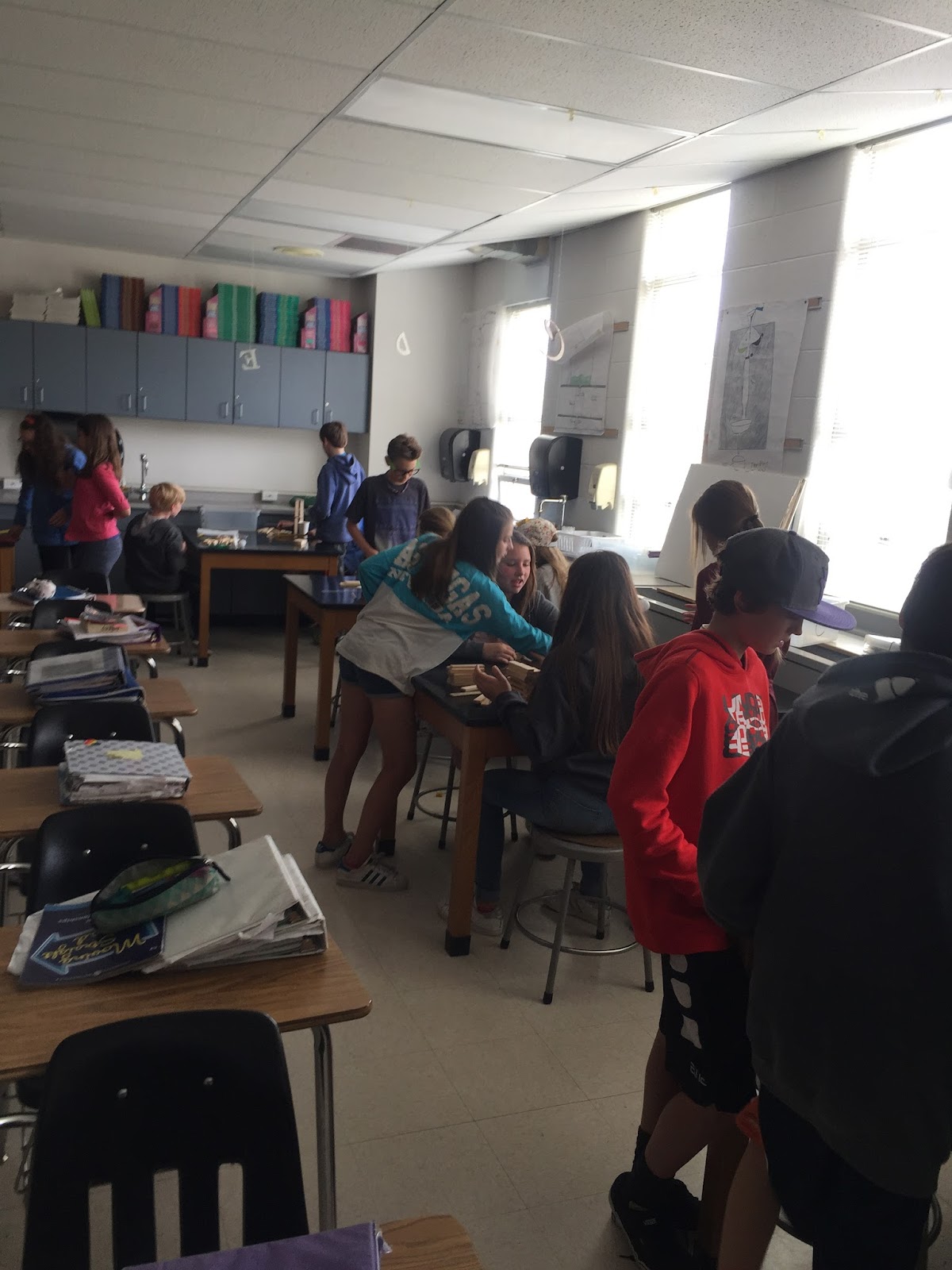So here are some of the techniques I used.
#1 Create Design Challenges and Invite Classes & Promote the Kits
I used the marshmallow challenge (link to slide presentation), yet there are a number of low-tech challenges that can incorporate collaboration and easily can be fit into a class period. My lesson before has been to show off some of the kits and then have the students work through a design challenge as a class. This also gives you time to talk to the teachers about possibles uses and check out procedures.
#2 Seek out Teachers to Schedule Classes
For flexible scheduling libraries such as mine, teachers will sign out times for research, yet will be unaware of the available kits. As my grant targeted Emerging Bilinguals and students in Academic Support Classes, I sought out those classes to schedule days to try out the kits. Initially, I held a rotation of duct tape crafts--where we made flower pens, K'Nex building, LEGOS and Ozobots. This gave students the opportunity to explore the different kits and the teacher to see how they could use them. Afterwards, I found teachers were more likely to check out kits for classroom use.
#3 Share at Faculty Meetings or Organize A "Share Fair"
Schedule time during a faculty meeting or just pull out some of your kits, either formally or informally, and have teachers explore. Also, being a part of our school's Professional Development Committee, I helped organized a teacher share fair. This was a choose your own adventure PD where teachers gave short (10-15 min.) presentations on something other teachers could use in their classroom. Teachers singed up and then rotated through presentations of their choosing. I gave two short presentations on the kits and let teachers explore them. This led to the two science classes signing up to use the kits for multiple days (see below)
#4 Organize a Station Rotation in Classrooms
I collaborated with a science teacher to do a rotation during her 6th grade Science classes of a mix of the district kits and some of the mobile kits I’d set up from my grant.
Kits/Stations
#1 OSMO Station
--Two Osmo set ups with i-pads
#2 Ozobot Station
--three ozobots
--bowling challenge
#3 2 Little Bits Music Station and headphones-in five way splitters
#4 Lego Station #1 w/ challenge cards
#5 K’Nex Renewable Energy w/ Motors
#6 Cubelets & Moss Robotics
#7 Lego Station #2 w/ challenge cards
I used an old library cart to move the kits down to the classroom as the library was booked for another class.
It was great to watch the kids walking in and their eyes lit up as they saw all the kits spread around the lab tables. I then oriented students to the different kits and then they were turned loose. “They were so engaged from the beginning. This is really cool,” noted Mrs. Scherer, the teacher.
As I circulated the first part of each period that I oriented, I noted students working on different kits--collaborating and problem solving. The students were respectful in sharing ideas and thoughts. “I liked that we didn’t have many directions. We had to figure it out for ourselves,” noted one student. Another student excitedly showed off her cubelet robot she had constructed and her partner excitedly asked, “How did you do that? Can you show me?”



Across the hall, the other science class was using the Keva Planks to construct different challenges. “You can tell the students who are really into design and engineering really take to it,” noted Mr. Johnson, the science teacher. I watched as students worked together and proudly displayed some of their challenges, such as making a ping-pong ball connect using a right angle. Of a classroom full of roughly twenty seven students, I only noticed a sparse few that were not engaged.
The other advantage of this was that once I oriented teachers to the kits, they were able to take over and I didn’t even have to visit the classroom anymore after that.
Overall this was a great success in student choice and having the students explore the kits without much teacher-led direction.
